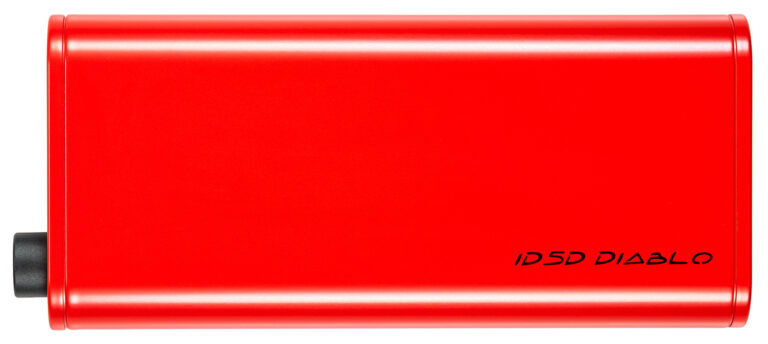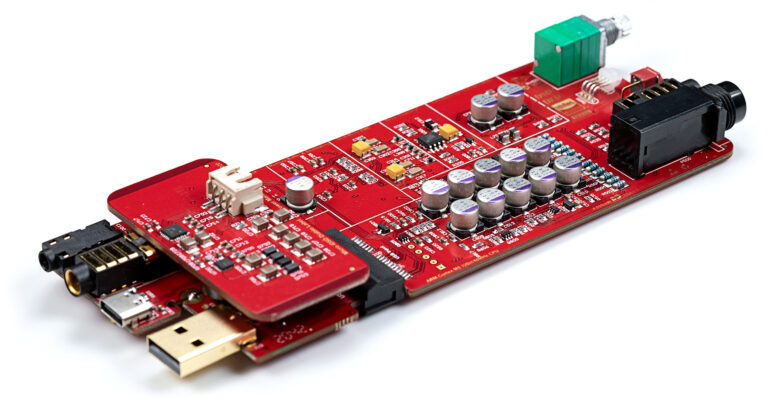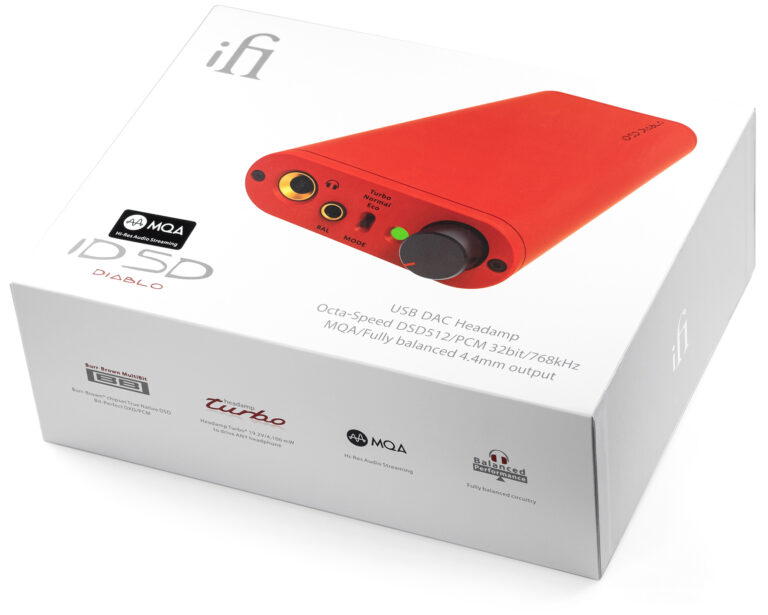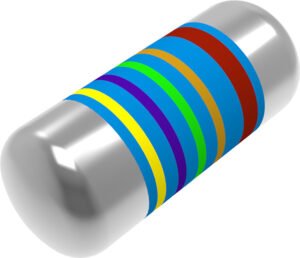Devilishly brilliant
The iDSD Diablo, with its sleek new design and fiery red finish, sits proudly at the top of our range of portable/transportable DAC/amps. It is built for purists – the true headphone enthusiasts who crave pure, unadulterated sonic performance.
Just like a racing car designed for uncompromising speed, the iDSD Diablo sets aside sonic tailoring as well as Bluetooth connectivity to focus on pure sonic power. Prepare for a riveting ride as it will drive any headphone on the planet with aplomb.
Put simply, the iDSD Diablo is our best ever transportable amplifier designed to deliver reference level sound.
‘Bit-perfectly’ wicked
We use two Burr-Brown DAC chips and the new 16-core XMOS chip to process the data received via the USB and S/PDIF digital inputs.
This means the iDSD Diablo can handle up to PCM 768, DSD 512, 2xDXD. Both PCM and DSD remain ‘bit-perfect’.
It also provides full MQA decoding! Check out our MQA set-up tutorial (using the highly acclaimed NEO) for Tidal, Roon and Audirvana here.

Positively pure
Balanced, differential analogue circuit design reduces noise and cross-talk within the signal path by fully separating the left and right channels. The iDSD Diablo benefits from further refinements to our balanced, symmetrical dual-mono topologies with short, direct signal paths. We call this PureWave.
Negative feedback is used in amplifier circuits to compare the output signal with the input signal and correct errors. BUT there are drawbacks. iFi turns the negatives into positives with OptimaLoop.
Read more on these technologies below.
Diabolically dynamic
Able to drive all manner of headphones with ease, the iDSD Diablo delivers up to 5000mW of prodigious power, propulsive energy and engaging dynamics, coupled with a remarkable ability to resolve fine texture and detail.
With 3 settings, you can adjust power and gain to suit your daily driver or track day supercar!
- Turbo – ramps up the level of drive for current-hungry headphones
- Normal – for most over or on ear headphones
- Eco – dials down the power to suit high-sensitivity in-ear monitors

Power that does not corrupt.
The iDSD Diablo’s focus on pure, unadulterated performance, means much attention has been applied to the power supply circuity.
Battery power provides ultra-clean and stable DC current avoiding the issues of mains electricity – dips, spikes and noise-inducing RFI/EMI pollution. BUT there are sonic downsides resulting from low output voltage and inconsistent output impedance as batteries discharge.
These issues are fully tackled by the iDSD Diablo’s design.
In order to make less efficient headphones, like planar magnetics, sing, the voltage needs to be stepped up from 3.7V to +/- 15V. We use a step-up converter running at 1.2MHz – a frequency far beyond audibility that is easier to filter than a typical switch-mode supply, enabling high linearity and ultra-low noise.

Formula 1, iFi style.
High-bandwidth power supply circuity is dedicated to each critical part of the iDSD Diablo’s design, with independent linear regulation delivering excellent PSRR (Power Supply Rejection Ratio) performance.
The headphone amp stage eschews IC regulators in favour of Panasonic OS-CON capacitors, delivering 2320uF between them.
The DAC section benefits from an ultra-low-noise regulator with additional passive filtering, reducing high order harmonic distortion and, in turn, jitter.
Even the USB input stage benefits from dedicated regulation and multi-stage filtering, and the microprocessor control circuitry (often a local source of digital noise) has separate regulation, too.
Crucial components for maxed out performance, more below.
Hooking up with the Devil…
At the front of the unit, alongside a standard 6.3mm single-ended headphone socket, resides a 4.4mm Balanced output for headphones offering balanced connection.
At the back are two digital audio inputs: USB-A and a S/PDIF socket that accepts both electrical and optical signals, the former via a 3.5mm connector and the latter via a supplied adapter.
The USB-A input features a ‘male’ connector, rather than a typical ‘female’ port for greater mechanical integrity. A separate USB-C charging port is also provided, along with a 4.4mm Balanced output to connect to an external amp.
Accessories galore
As befits a reference-level product, we’ve included a whole host of accessories in a luxurious travel case, the iTraveller.
As the iDSD Diablo may be powered from the mains, as well as by its built-in battery, we’ve included our super silent, noise-cancelling iPower 5V AC/DC adapter to ensure optimal sound quality.
Also included is a 4.4mm Balanced to XLR balanced interconnect cable to connect the iDSD Diablo to an amp and speakers (or a pair of active speakers) with balanced XLR inputs.
Other supplied connectors include a high-quality USB-A audio cable, a USB-A to USB-C charging cable and an adapter to connect headphones with a 3.5mm jack to the 6.3mm single-ended output.

MP3 – this is the most popular file format, every device in the world can use it.
PCM – Pulse Code Modulation is the most common format for CDs and DVDs.
DSD – Direct Stream Digital is a very high-quality audio format, better than CD quality. The higher the number (sample rate), the better the recording – DSD64, 128, 256, 512 and 1024.
DXD – Digital eXtreme Definition is a very high-quality PCM format. It was developed to edit hi-res (high quality) recordings recorded in DSD.
If a file is ‘Bit Perfect’ it means it has stayed the same. For example, if a PCM file is played through a DAC to improve the sound quality and the DAC does not change the file format, the file is ‘Bit Perfect’
Gain is the amount of increase in audio signal strength. Gain is often expressed in decibels (dB).
MQA is a very high-quality streaming technology. It’s a compressed digital-audio format that doesn’t lose the audio quality of the original performance recording. More here.
Radio-frequency interference (RFI) is very similar to electromagnetic interference (EMI) but is found in the radio frequency spectrum. It is another source of irritating, unwanted noise often talked about as an ‘audio gremlin’. Top tip: just don’t add water.
EMI is a type of interference caused by errant and unwanted electromagnetic waves that are received and amplified by an audio system.
These are sources of the irritating, unwanted noise we often talked about as a ‘audio gremlin’. Top tip: just don’t add water.



























